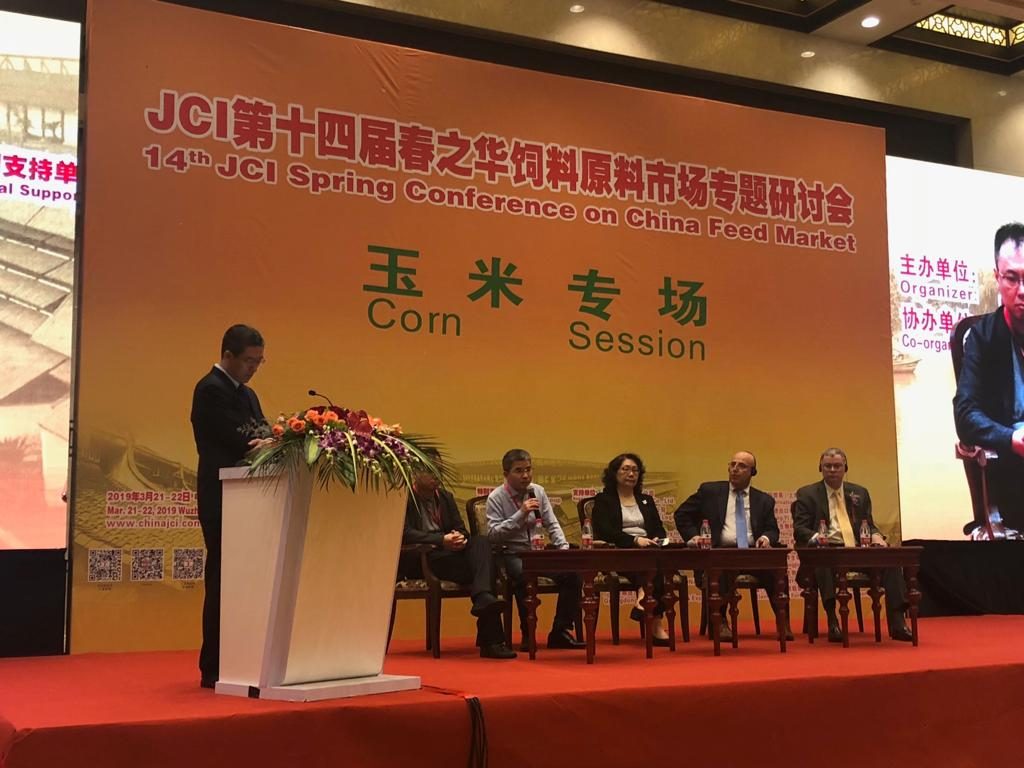Recent sales of U.S. corn and sorghum to China convey the importance of staying engaged in the Chinese market as trade negotiations between the two countries continue.
Private exporters have reported a total of 458,300 metric tons (18 million bushels) of U.S. corn sold to China as of March 22, according to the U.S. Department of Agriculture (USDA) – significant sales that exceed the year-end total for the 2017/2018 marketing year. Combined with 130,000 tons (5.12 million bushels) of U.S. sorghum sold as of March 14, these sales provide reinforcement for Chinese buyers’ willingness to purchase U.S. feed grains when political conditions permit.
“The corn purchase by China announced in USDA’s export sales report is very welcome news for U.S. agriculture, and we see it as a positive sign for the U.S.-China relationship as intense negotiations continue,” the U.S. Grains Council (USGC) reported last week. “The outcome of these talks is crucial to U.S. grains and ethanol, and we appreciate continued engagement by our negotiators and their counterparts in China.”
A USGC delegation gained an on-the-ground perspective last week of what these recent sales could mean for future demand. Reece Cannady, USGC manager of global trade, joined the Council’s staff in China and representatives from the United Sorghum Checkoff Program (USCP) for the 2019 JCI Conference, the country’s largest feed ingredient meeting, in Wuzhen, China. The Council co-sponsored the conference, which had record attendance by Chinese importers and customers, including a morning session focused on corn.
Bryan Lohmar, USGC director in China, presented on world supply and demand. The conference also included valuable information on farming modernization efforts in China and provided insights into the development of African Swine Fever in the country, which could reduce hog production by 30 percent in China.
U.S.-Chinese trade negotiations were a topic of many conference conversations. Importers were especially interested with regard to the timing and terms for trading for U.S. sorghum, particularly for the Chinese baijiu industry.
“The demand is very real,” Lohmar said. “Every meeting that we went to people talked about how ready they are to buy U.S. sorghum.”
The Council’s staff in Washington, D.C., and in China continue to follow the trade negotiations. U.S. Trade Representative Robert Lighthizer and other U.S. officials traveled to Beijing this week to continue talks, and the United States is scheduled to host a Chinese delegation in early April. The Council will continue conversations with key players to keep members and customers informed.
About The U.S. Grains Council
The U.S. Grains Council develops export markets for U.S. barley, corn, sorghum and related products including distiller’s dried grains with solubles (DDGS) and ethanol. With full-time presence in 28 locations, the Council operates programs in more than 50 countries and the European Union. The Council believes exports are vital to global economic development and to U.S. agriculture’s profitability. Detailed information about the Council and its programs is online at www.grains.org.

